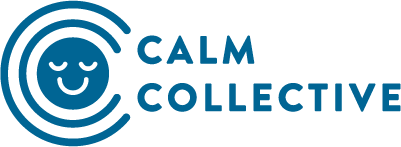What does a mental health first culture at work look like?
Work and mental health? Sounds like an oxymoron, a hearty laugh and the irony of ironies? Well, it doesn’t always need to be and thankfully, most of us can agree. From traditionally being a “nice-to-have”, internal wellbeing programs are now “must-haves” if companies want to retain top talent and maintain brand image. As Anita Sadasivan (Co-Founder and Chief Wellbeing Officer of MindFi) rightfully said during our How to thrive in the virtual workplace webinar, “people are constantly in work mode and feel a constant obligation to answer all messages and work at all hours of the day… it is the lack of me time that has been contributing to burnout”. With the onus increasingly being placed on companies to develop healthy individuals (not just employees), it is extremely useful to discuss what an ideal situation would look like if companies strived to maintain a mental health first culture at work.
Imagine this: Companies allocated just one day or maybe even two for their employees to have as Mental Wellbeing Day(s) — A day to consciously ignore the laptop (and the 3 different monitor screens), a day to be fully present with loved ones, a day to refocus one’s identity on the self. Sounds crazy? It probably is.
1. A mental wellbeing component in the employee benefits package
Starting with a realistic foundation, companies must include a component in their employee benefits that empowers employees to seek professional mental health treatment when they need it. When employees are assured that they are financially covered under their Employee Assistance Program (EAP), they are more likely to schedule their first chat with a professional therapist or sign up for paid courses on mental wellbeing training. Professional consultation fees are hefty, but with a robust company fund allocated for such expenses and a guarantee of confidentiality upon claims submissions, weary and fatigued employees are encouraged to take ownership of their mental wellbeing. However, this is insubstantial and worryingly underutilised — multiple studies found EAP to be an underutilised resource, averaging only a 10% usage rate.
2. Supportive team members
To improve usage, companies should first normalise the institutional habit of team members supporting one another. This is echoed by Chief Medical Officer and VP Global Health at Unilever, Diana Han, who recently shared in a conversation with Mindful Communications that on a corporate level, “emotional wellbeing is extremely important”’. Moreover, she believes that the power of having work peers is underestimated and companies can do more to establish this healthy workplace dynamic. There is a newly conceptualised term, “frolleague” (a combination of “friend” and “colleague”) that advocates for transcending beyond an employee identity to having friend-like camaraderie. Han would resonate well as she believes that as much as a colleague can provide their professional support, they bring something more impactful to the table — their raw vulnerability and reassurance.
3. Mental wellbeing as a key pillar in Learning & Development
To complement this, a robust mental wellbeing internal programme would be one where the learning and development (L&D) department places mental wellbeing as a key pillar for workplace development and growth. By aligning with up-to-date jargon and terminology to address rapidly shifting needs, the L&D team plays a pivotal role in addressing employees’ inner struggles and ensuring they are well-supported. Accurate webinar topics and impactful delivery must work in tandem to inspire employees to live with a growth mindset, to practice mindfulness and gratitude, and draw better work-life boundaries. Through these initiatives, conversations and rhetoric surrounding mental wellbeing gradually normalise and employees become well-acquainted with mental health knowledge to boost their own mental health and seek to be an advocate for others.
A potential L&D programme could be uniquely dedicated to altering language used in conversations surrounding leave days. When an employee takes a day off, there is often a preconceived notion that they must be feeling physically unwell and more so now, with the c-word virus causing a rampage. What if they’d just had too many meetings to count and hadn’t had time to eat healthy or even eat at all? What if their family misses them and quality time with them has been impossible? These are extremely reasonable needs and though non-medical, doesn’t make them any less important or valid. To validate such requests, companies should use emotion-centred language by opting for questions like “What are you feeling right now?” and following it up with reassurance like “I’m here to listen if you would like to share”. Language is a powerful mechanism for breaking stereotypes and if mental health is to be prioritised in the workplace, conversations must begin to factor in one’s emotions and mental state that exceed what meets the eye.
Building this culture is not promised to be smooth-sailing as there should be a firm commitment from the higher management that must eventually cascade to a supportive colleague-to-colleague friendship-like dynamic. We have leaps and bounds to go if we wish to witness a radical shift in company culture that values mental health, especially here in “hustle and bustle” Singapore. When we think of the growing conversations surrounding this topic, however, there is good reason to smile. In our talks, we are grateful to witness top leaders being part of such conversations that normalise diagnosed mental health conditions, such as when Larry Loh (formerly Head of Communications, Twitter Asia-Pacific) had a moment of vulnerability during our Well-being in the Workplace chat. Progress is progress no matter how small the step(s).
As we seek to move such conversations forward, let’s be the change we want to see — use your company budget to enrol in a mindfulness course, take the time to chat with your colleague over lunch (and hold yourself back from launching into work-talk), choose to use language that edifies and affirms — the list goes on. Whatever the case, be in a company that upholds the value of putting people first!
